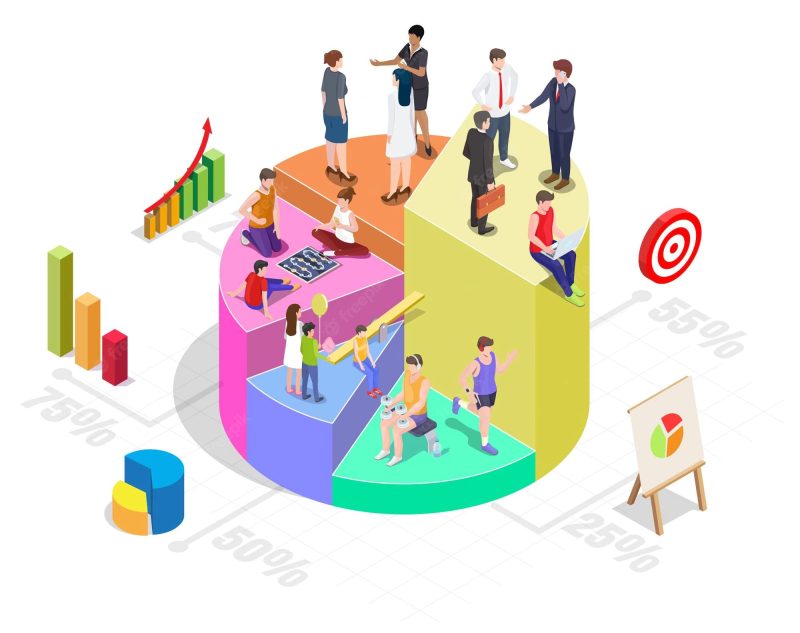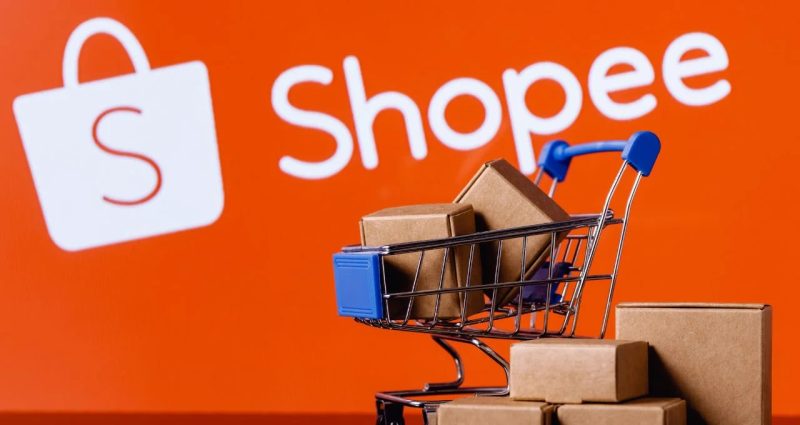
To be able to maximize the effectiveness of marketing strategies as well as business plans, every business thinks about identifying customer segments. Because in any market by geography, in any industry, customers always have a lot of diverse needs, wants, and interests.
Understanding what customer segmentation is is the first step to help businesses classify, select and locate their customers. Only when they understand the customer, marketing activities at this time can be effective.
What is customer segmentation?
Customer segmentation (also called market segmentation) is a marketing practice that divides the customer base into small groups.
It can be divided by geography, demographics, psychology, behavior and other characteristics. The key to effective segmentation is to divide customers into groups based on; predict their value to the business.
Then, target each customer group with different strategies to extract maximum value from high and low profitability customers. This will also help you customize and personalize the customer care services in your Marketing campaigns, to improve service quality and achieve better business results.

For example : For a company that manufactures chemical and cosmetic products, the customer segment of the anti-aging product line will be recorded as female genders, living in big cities, middle income level. come high and are willing to pay for beauty products.For example, for trendy beauty product lines , beautiful shimmering packaging and affordable prices, the group of students, students, and young girls under the age of 25 are the main shoppers. .
Types of customer segments:
B2C customer segment:
- Demographic segmentation breaks down the market into segments. This breakdown is based on variables such as age, generation, gender, race, ethnicity, marital status, family size, education, occupation, and income.
- Geographic segmentation divides the target market on the basis of location. Such as; countries, states, cities, regions, as well as various geographical factors (climate, cultural preferences, population, etc.)
- Psychographic segmentation allows customers to be classified according to common personality traits, values, beliefs, attitudes, interests, lifestyle, and social class.
- Behavioral segmentation involves grouping customers according to how they interact with a brand. For example; buying habits, occasion or time of purchase, product/service usage, benefits sought, buyer journey stage, user status or loyalty.
For B2B customer segments:
- Priority or business segmentation uses a simple classification method based on publicly available characteristics. For example; industry and company size (by number of employees or annual revenue.)
- Demand-based segmentation gathers customers according to the validated need they demonstrate for the specific products or services being offered.
- Value-based segmentation helps differentiate customers based on the economic value they bring to the business. Both in terms of completed sales and potential sales.
Why segment customers?
“Selling to people who really want to hear from you is more effective than interrupting strangers who don’t want to hear you.”
Seth Godin – American author and former dot com
When using a generic marketing method, even the smartest strategy may not bring the desired results. No matter how effective your marketing efforts are for some customers, they can still fail when applied to others. This is where you need to apply customer segmentation. If done right, it can bring many benefits to businesses:
Better marketing campaigns
Customer segmentation allows businesses to create more focused, customized marketing messages for specific segments. According to a survey by Mailchimp, campaigns segmented based on customer interest achieve 74% higher click-through rates on average than unsegmented campaigns.
Suggestions for improvement
Have a clear idea of who your customers are and what they want to get by using your product/service. It allows you to tweak and optimize the services. As a result, you can meet the needs and expectations of your customers, thereby improving customer satisfaction.
Ability of extension
Segment potential and existing customers into specific subgroups. As a result, businesses can better understand what customers may be interested in. This will promote the expansion of new products and services that are relevant to your target audience.
Retain more customers
Customer segmentation can help businesses develop better targeted customer retention strategies by identifying the company’s highest paying customers. From there, create offers that are personalized to them, or re-engage people who haven’t made a purchase in quite some time.
Price optimization
Determine the social and financial status of the client. It makes it easy for businesses to set the right prices for products/services that their customers consider reasonable.
Increase revenue
Spend less time, resources, and marketing efforts on less profitable customer segments and more time on the company’s most successful customer segments. As a result, it increases sales, profits as well as reduces selling costs for the business.
Some examples of customer segments
Vinamilk’s customer segments
Vinamilk has now become a national name when it comes to milk and dairy products. As a pure Vietnamese brand, Vinamilk has correctly identified its customer segment so that it can make a mark on the market when there are still many foreign dairy names that are competing fiercely.
Vinamilk’s customer segment consists of two main groups: individual customers and corporate customers.
For the individual segment, Vinamilk targets preschool children, teenagers, then the elderly and infants. Vinamilk’s products usually have mid-range prices, are popularly sold in supermarkets, and are easily found at agents across the country.

In addition, Vinamilk is also a sponsor for many years of the school milk program, in order to bring the Vinamilk brand closer to the children. Most households in Vietnam now have an average income. so they can easily pay for Vinamilk’s products.
Not only that, Vinamilk has also gradually improved many different product lines such as organic milk, plant-based vegan milk, etc. to serve customers with higher incomes and concerns about nutritional health. nursing.
Shopee’s customer segment
As a start-up from Singapore, Shopee has now become one of the major e-commerce platforms and is known by many young people. Even when it comes to the concept of “buying online”, many people immediately remember Shopee as an unconscious habit.
When it comes to Shopee’s customer segment, we mention the following key factors:
Geographically, Shopee’s customers are concentrated in large, densely populated cities with high purchasing power such as Hanoi or Ho Chi Minh City. Ho Chi Minh. However, thanks to the C2C business model (between individuals), this trading floor was able to cover the whole country, even in remote rural and mountainous areas.
Demographically, Shopee lovers are aged between 16 and 40, have Internet access, use smartphones, and are interested in a wide range of items from household appliances, furniture, health , Mother and baby…
In terms of psychology and behavior, Shopee targets groups of people who spend a lot of time online, love online shopping to save time, freely choose from many product models and can get free shipping.

There are four main target groups that Shopee aims to:
- The regular spending group is usually housewives, nursing mothers, and the family’s “key box”. They love to consider product lines, choose something delicious – nutritious – cheap and feel satisfied when they can find a place that sells the same product at a lower price than other shops.
- The group of random shoppers, usually young people with shopping preferences, are influenced by consumerism and do not know how to manage personal finances. These are the main objects of Shopee’s monthly scheduled sales.
- Convenience-loving customer group: these are modern customers who want to take advantage of the speed of online ordering and payment via e-wallets as well as many accompanying incentives.
- The group of customers who love rewards: these are mainly young people under the age of 18, who tend to buy products if they are accompanied by incentives, gifts or hunt for unique and different products.
Conclude
In the context that customers are becoming increasingly demanding and require high personalization, correct and successful customer segmentation is the first step for you to improve your brand score in the hearts of consumers.
Therefore, finding out what customer segmentation is is an indispensable step in any methodical marketing plan!




